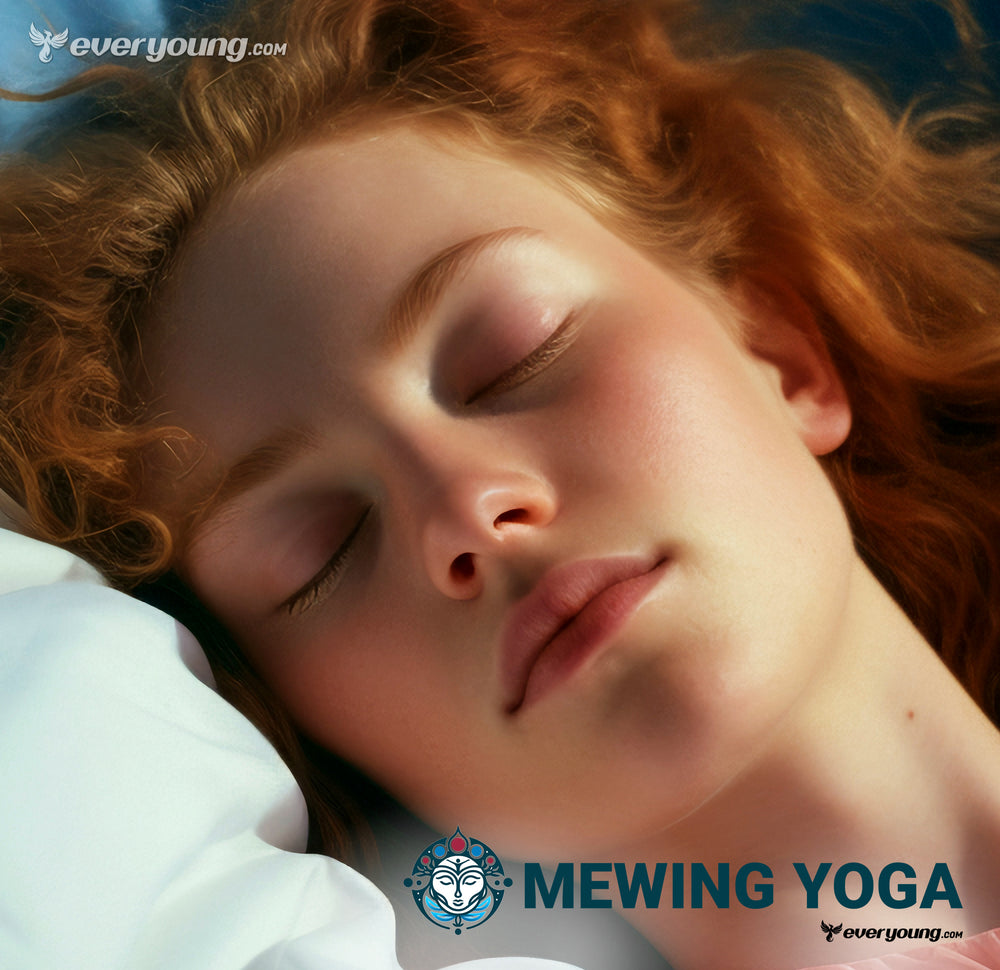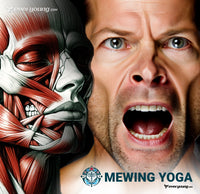6. Mewing Yoga and snoring
Potential of Mewing Yoga in Alleviating Snoring
Snoring, a common issue affecting countless individuals worldwide, often leads to disrupted sleep patterns not only for the snorer but also for their partners. While traditional treatments and interventions are available, there is growing interest in alternative methods such as Mewing, a technique that involves optimizing tongue posture to potentially improve snoring, and related conditions like sleep apnea, which we described in this article.
Understanding Mewing and Its Connection to Snoring
Mewing Yoga includes maintaining a proper tongue posture by pressing the entire tongue against the roof of the mouth. This practice has several benefits, including potentially mitigating snoring. The theory suggests that by repositioning the tongue and improving the structural alignment within the oral cavity, Mewing can positively impact airway patency during sleep.
Scientific Insights - Mewing and Snoring Reduction
Research highlighted in the European Journal of Orthodontics indicates promising results. Individuals engaging in tongue-repositioning exercises—akin to Mewing—experienced a noticeable decrease in snoring. These exercises, targeting the mild to moderate spectrum of obstructive sleep apnea, underscore the potential of such practices in enhancing sleep quality and reducing snoring. However, it's crucial to underscore the necessity for further scientific exploration to establish the long-term efficacy and reliability of Mewing as a snoring remedy.
Mechanics Behind Mewing's Potential Impact on Snoring
In exploring the ways through which Mewing Yoga might exert a beneficial influence on reducing snoring, it becomes evident that this technique intertwines various physiological adjustments for its potential impact. At the heart of Mewing's approach is enhancing muscle tone within the oropharyngeal region. By strengthening these muscles, Mewing aims to prevent the airway from collapsing during sleep - a common trigger for snoring - and ensures the airway remains open, allowing for smoother and quieter breathing.
Simultaneously, Mewing Yoga's regular practice is believed to subtly alter jaw positioning, nudging the mandible or lower jaw slightly forward. This seemingly minor adjustment can have significant repercussions, creating more space at the back of the throat, essential for keeping the airway unobstructed throughout the night. Such an open airway directly contributes to a reduced likelihood of snoring, showcasing how structural changes in jaw positioning can play a critical role in respiratory health during sleep.
Moreover, Mewing Yoga emphasizes the importance of optimal tongue posture, guiding the tongue to rest firmly against the roof of the mouth. This positioning strategically prevents the tongue from falling back and blocking the throat while one sleeps, a scenario frequently responsible for snoring episodes. Ensuring the tongue maintains this posture not only aids in keeping the airway clear but also underscores the interconnectedness of oral habits and their impact on snoring.
Through these interconnected mechanisms - from improving muscle tone and adjusting jaw positioning to maintaining optimal tongue posture - Mewing Yoga presents a comprehensive approach to potentially mitigating snoring. By addressing the structural and functional aspects contributing to airway obstruction during sleep, Mewing offers a holistic strategy to enhance sleep quality and respiratory health.
Mewing Yoga as a Snoring Intervention
While Mewing Yoga presents a compelling approach to addressing snoring, individuals must approach this technique with a mindful perspective. Continuous research and evidence are necessary to fully validate Mewing's and Mewing Yoga's effectiveness in snoring reduction. For those grappling with snoring, consulting with a healthcare professional or a sleep specialist is advisable to receive personalized advice and explore the most appropriate treatment options.
Thus, Mewing Yoga holds the potential as a non-invasive, cost-effective strategy for mitigating snoring. Its emphasis on improving oral and throat muscle tone, jaw positioning, and breathing patterns aligns to enhance respiratory health and sleep quality. As we await more comprehensive studies, the initial evidence encourages a cautious yet optimistic view toward incorporating Mewing Yoga into snoring management protocols.
Readers suggest






